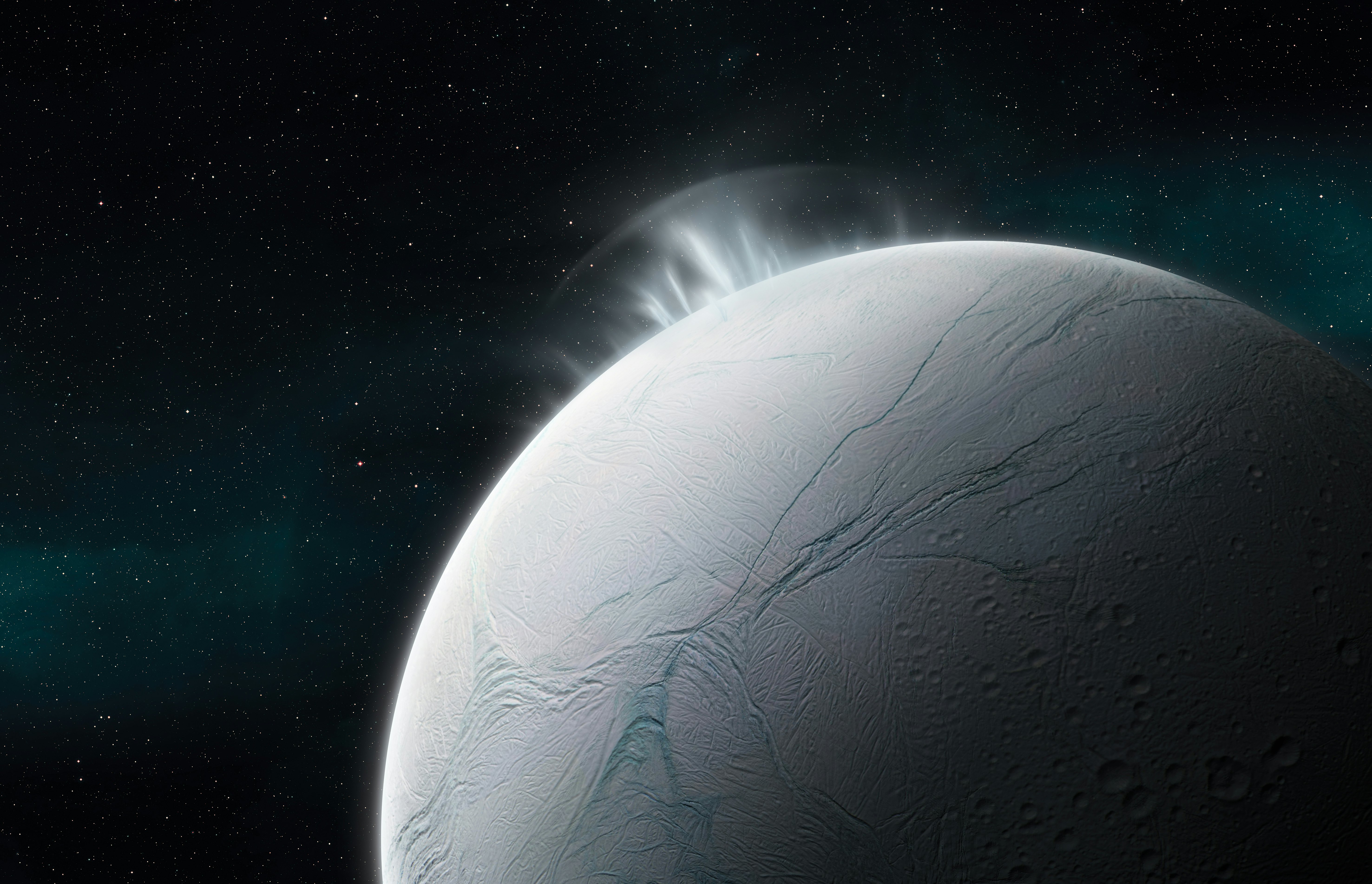
It could be easier than we thought to find evidence of life on the icy surfaces of moons like Europa and Enceladus.
Far from the Sun, in the outer Solar System, a small handful of icy moons orbiting gas giants are hiding whole oceans beneath their frozen crusts. On Jupiter’s moon Europa and Saturn’s moon Enceladus, some of that hidden seawater finds its way to the surface through geysers or cracks on the ice — and it could contain traces of whatever lives in the alien oceans beneath. The organic material that washes up onto the surface could contain molecules, or even whole cells, from a hidden alien ecosystem thriving below the ice.
According to recent experiments at NASA’s Goddard Space Flight Center, evidence of alien life could be preserved on the surface of Enceladus, and just a few inches below the surface of Europa, despite the heavy bombardment of radiation that scours the surface of both moons.
Planetary scientist Alexander Pavlov, of NASA Goddard, and his colleagues published their work in the journal Astrobiology.

Simulating an Irradiated Icy Wasteland
In their lab at Goddard, Pavlov and his colleagues mixed up several simulated versions of the slush — laden with organic matter — that ends up smeared and spattered across the ice atop Enceladus and Europa’s oceans, all chilled to -321 degrees Fahrenheit. Then they bombarded the chilly cocktails with gamma radiation, to simulate the radiation that constantly blasts the surfaces of Enceladus and Europa. And it turns out that most of the evidence of life survived higher doses of radiation than the researchers had expected.
High-energy radiation can trigger chains of chemical reactions, which eventually break down the molecules associated with life including DNA, amino acids, and proteins, among others. Amino acids are the building blocks of proteins (which are the building blocks of pretty much everything that makes life actually work). Some amino acids can form through chemical reactions that have nothing to do with life, but others are what scientists call biosignatures: If you see these particular chemicals, especially if you see them along with other biosignatures, they probably came from a living cell at some point.
Pavlov and his colleagues wanted to know how long it would take the harsh radiation to break amino acids down into something useless to astrobiologists — a molecule that wouldn’t clearly point back to alien life as its source. They also wanted to know how deep future missions would have to drill into the ice to find signs of life, if they exist at all.
That’s something astrobiologists, planetary scientists, and mission planners have been trying to figure out for both Europa and Enceladus. Some studies suggest that the tremendous geysers of Enceladus could blast whole microbes out into space, where a passing spacecraft could just scoop them up. At the other end of the spectrum, some researchers predict that landers might have to drill all way through Europa’s ice to the ocean beneath.
But thanks to cryovolcanism — a phenomenon that happens in very cold places like Europa and Enceladus, where water or partially-frozen slush behaves like magma here on Earth, so it either oozes out of cracks in the ice or erupts in geysers — there’s organic material splattered across the moon’s frozen surface. The only question is whether it’s too damaged by radiation to actually reveal anything about whether there’s life beneath the ice.
The answer, it turns out, is probably good news for future missions.
Right There on the Surface
Once Pavlov and his colleagues had calculated how quickly their amino acids broke down under different radiation doses, they combined that with everything we know about how much radiation hits different regions of Europa and Enceladus, along with how old the ice is in those regions. That information let the researchers predict where future missions would stand the best chance of finding evidence of life — and how deep they would need to drill.
On Europa, future missions should find intact, recognizable amino acids about eight inches beneath the surface, especially in the high latitudes near the north and south poles of the moon. And on Enceladus, future missions will just need to scrape away the top fraction of an inch of ice to find usable samples.
That could make it much easier for eventual landers — which could reach Europa sometime in the 2040s, if NASA’s planned Europa Clipper mission finds anything interesting when it arrives in orbit around Europa in a few years — to get samples that might (or, alas, might not) contain evidence of alien life swimming in the dark water beneath the icy crust.







